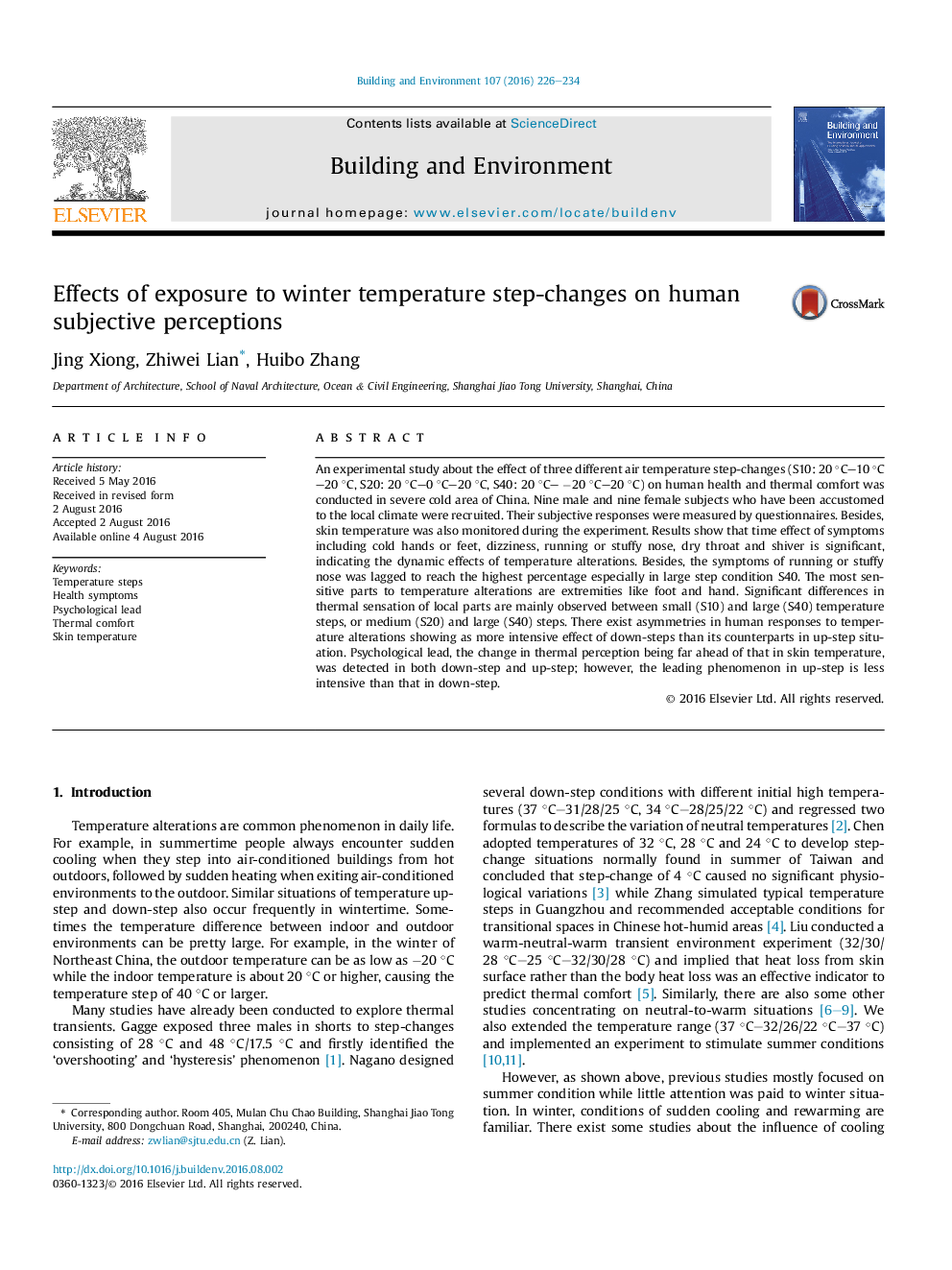| Article ID | Journal | Published Year | Pages | File Type |
|---|---|---|---|---|
| 6698678 | Building and Environment | 2016 | 9 Pages |
Abstract
An experimental study about the effect of three different air temperature step-changes (S10: 20 °C-10 °C-20 °C, S20: 20 °C-0 °C-20 °C, S40: 20 °C- â20 °C-20 °C) on human health and thermal comfort was conducted in severe cold area of China. Nine male and nine female subjects who have been accustomed to the local climate were recruited. Their subjective responses were measured by questionnaires. Besides, skin temperature was also monitored during the experiment. Results show that time effect of symptoms including cold hands or feet, dizziness, running or stuffy nose, dry throat and shiver is significant, indicating the dynamic effects of temperature alterations. Besides, the symptoms of running or stuffy nose was lagged to reach the highest percentage especially in large step condition S40. The most sensitive parts to temperature alterations are extremities like foot and hand. Significant differences in thermal sensation of local parts are mainly observed between small (S10) and large (S40) temperature steps, or medium (S20) and large (S40) steps. There exist asymmetries in human responses to temperature alterations showing as more intensive effect of down-steps than its counterparts in up-step situation. Psychological lead, the change in thermal perception being far ahead of that in skin temperature, was detected in both down-step and up-step; however, the leading phenomenon in up-step is less intensive than that in down-step.
Related Topics
Physical Sciences and Engineering
Energy
Renewable Energy, Sustainability and the Environment
Authors
Jing Xiong, Zhiwei Lian, Huibo Zhang,
